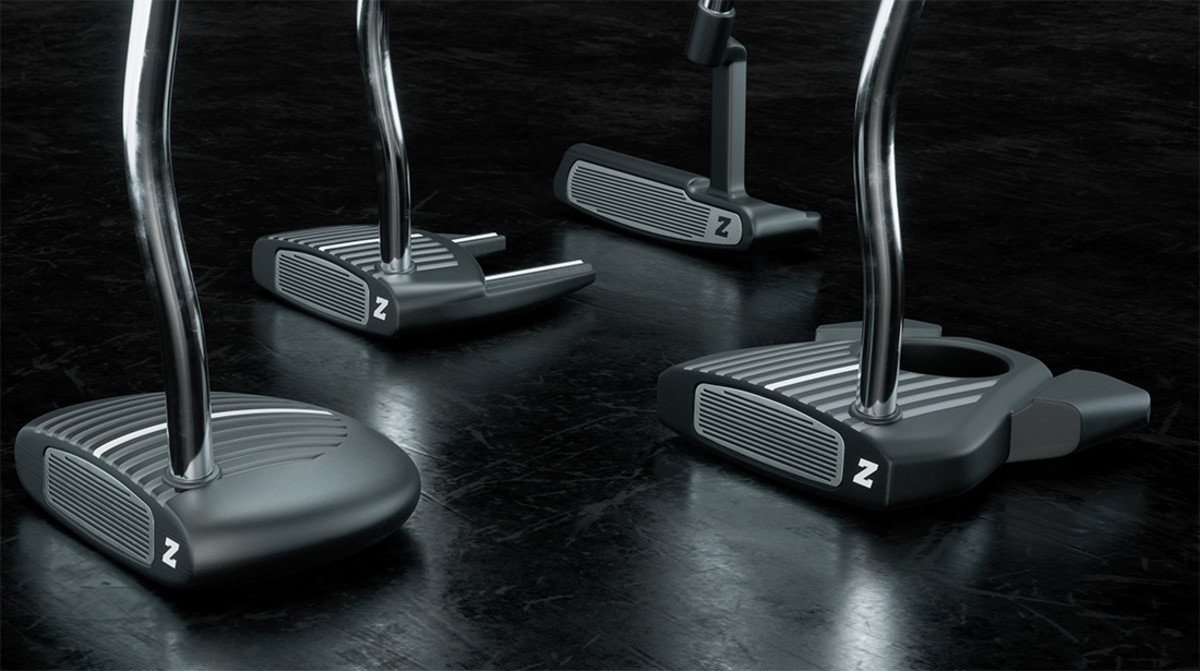The Ram Zebra Putter is Back and Better Than Ever

We’ve got a winner for golf’s Comeback of the Year in 2023.
It’s the Ram Zebra putter.
The Zebra putter was born in the mid-1970s, used by Raymond Floyd to win the 1976 Masters, and was among the first D-shaped, face-balanced mallet putters. The Zebra, so named for its striped crown, ranks among the most iconic putters in history along with the Spalding Cash-In, Wilson Staff 8802, Ping Anser and The Response, to name a few.
What happened to the Zebra putter? Mismanagement. Zebra was bought out by Ram Golf in 1980. When Ram Golf later began to slowly sink like the Andrea Doria, it ended up as a house brand at Golfsmith, which took it over and eventually discontinued it. Dick’s Sporting Goods then bought Golfsmith’s remnants from bankruptcy and didn’t do anything with the assorted old brand-name assets.
Finally, Ram Golf and TearDrop putters (and also MacGregor) were bought in 2019 by Golf Brands, Inc., an English company. The Zebra putters were shown at February’s PGA Merchandise Show in Orlando and got a lot of attention.
Reviving an icon successfully is as tricky as doing a good movie sequel. Ask Ford about its Thunderbird reincarnation or try to watch “Caddyshack II.”
The return of the Zebra, however, is a reason to celebrate. I liked almost everything about it immediately when I tried the resurrected model—the heft, the look of the rounded-D mallet head, the depth of the putter face and the more-prominent-than-ever alignment striping. The Zebra’s putter face does feel a touch hot. The ball comes off quickly, but I prefer that since I putt on a lot of slow greens. Once my Augusta National membership comes through any day now, though, I might change my mind.

Anyway, the club’s iconic nature demanded a better tester. I thought it should be in the hands of someone who had a long history with the original Zebra. So I shipped my Zebra to Nick Price’s home in Florida. Price won a British Open with it in 1994.
“They modernized a really old favorite, that’s the best way to put it,” Price said by phone after using the new Zebra for a few rounds. “They’ve made it with all the newer materials. The Zebra was ahead of its time, to be honest. The designs (stripes) were almost hypnotizing. If you had trouble lining up your putt, that putter helped you very much.
“Every time I see one of the Zebras, it always brings back great memories because I looked at it so many times. Raymond Floyd had a great run with it.
Price’s original Open-winning Zebra was last seen in his display locker at the World Golf hall of Fame. As much as he liked the original, he said, it required some serious tinkering.
“The original putter face was so hard,” Price said. “Whatever metal they used to cast it was like a rock. The new one has softer metal and the ball stays on the putter face much longer. As greens have gotten faster, a stroke with a very hard putter makes the ball come off so quickly, you’re going to alter your stroke. Once you’ve got that fear in you, you’re never the same, you start decelerating.”
In the early 1990s, Price started winning tournaments using a Ray Cook M1-X putter designed by Scotty Cameron. Then Price asked Ram to make him a Zebra mallet with a softer face than the consumer version, which had firmer investment cast heads.
“They were frankly a cheaply made putter, they were selling for $49,” Price recalled. “I filled the hollow part in mine with epoxy. Jim Hansberger ran Ram in those days. I really like Jim and I told him, ‘Everybody is milling their putter faces now, you’ll make your money back in six months’ and he said, ‘I don’t want to do that, our putter is selling well.’ Jim didn’t have the vision, it’s like he was stuck in time. The Zebra putter was cheap-looking, like some guy had fiddled with it in his garage and was selling it. If that putter would’ve had a milled aluminum face, it would’ve taken off even more than it did.”
Price subsequently worked with Ram’s clubfitters to create a Zebra putter with a deeper face. They also tried using different materials for the face inserts.
“I always had a pop stroke,” Price said. “One thing about Raymond’s original, it had a very shallow face. It felt like you were hitting up on the ball just to hit the equator. If you had a flat putting stroke, it felt like you were almost chipping it.”
Once Price received the Zebra I shipped, he tinkered with it, putting on a different grip, adding length to the 34-inch model and smoothing out the loft and lie to his liking. Then he played a few rounds and said he enjoyed it.
“There is a big change in the feel, this one feels much, much better,” Price said.
It’s worth noting that the new Zebra putter was designed by Austie Rollinson, who is the Steven Spielberg of putter design. Rollinson was behind the famed Odyssey putters, which were hugely popular. Since the Zebra re-do, Rollinson has moved on to a position with Titleist so he is not in a position to comment about a competitor, even if it’s one he created.
Oddly, not long after I heard back from Price, I was paired against Bill Dickson of Shanopin Country Club (Pittsburgh area) in a senior interclub match. Dickson putted the lights out in the match, which he and his partner won, pending my demand of a recount. He used an original Ram Zebra half-mallet.
Dickson, 60, became a Zebra man in 1978, by his recollection, when he tried a buddy’s Zebra and immediately coveted it even though he’d always used a blade putter. Later that summer, he used his birthday money—$30—to buy it from his pal, who was struggling on the greens. “He knew I wanted it and drove a hard bargain,” Dickson said.
Dickson got back into golf five years ago after a 25-year break caused by real life—work, family, kids, the usual. His old golf equipment had disappeared but his wife, aware of his putting issues, called one day to say she was in a discount store and spotted two Ram putters (both half-mallets) in a barrel for five bucks apiece. “Buy them both!” Dickson practically shouted into the phone. The rest is senior interclub history, unfortunately. Luckily, I’m not bitter.
“The original Zebra is easy to align, easy to stroke and I just like the feel,” Dickson said. “I like to hunt and shoot so when I’m putting my best, I think of my right eye as the back sight of a rifle and the Zebra’s alignment lines as the front sight. I use light grip pressure and simply let the weight and balance of the Zebra square the face at impact. It feels like a dream in my hand.”
The new updated Zebras have a dream for everyone. The traditional D-shaped mallet head, with distinctively stronger striping pattern, is the AIT 1 Rounded Mallet; the AIT 2 is the Fang Mallet, featuring two prongs on the head; the Inertia Mallet, basically a half-mallet, is AIT 3; and the Wide-Body Blade, AIT 4, which has a large square design around a hollow center space.
The models have multi-material face inserts, and optimal weight-balancing. Custom weighting kits are also available. Retail prices for the putters, available at range from $219 to $249.
Few clubs have aged so well, lasted so long or made a better comeback. The club is iconic for a simple reason. Said Price, “The Zebra is such a fantastic design.”
That goes for the original and the updated version.
